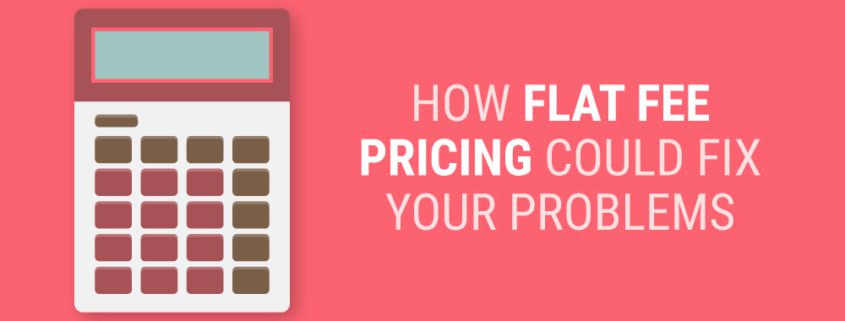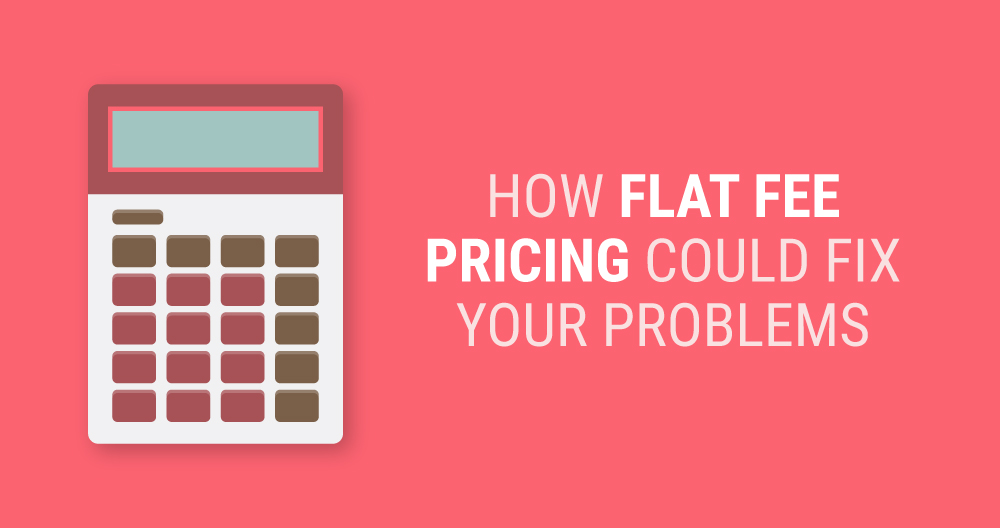Stop the Billable Hour Insanity
Are flat fee pricing models the future?
The most common pricing model among attorneys is charging by the hour.
This traditional method works well for many. However, people are starting to look for something different. And some law firms are there to give it to them.
As the ever-evolving market moves away from tradition, more and more attorneys are reconsidering their pricing model.
One of the most popular of those pricing models? Flat fees.
A flat fee is a predetermined, total fee that is paid upfront before work is started.
But is it right for your firm?
Pricing Model Considerations
Consider the following when looking at pricing models for your firm:
- The experience for your clients
- How your time will be spent
- The effect on your sales and marketing
Your law firm is a business. Bringing in the most profit possible is a top priority.
But there are plenty of factors that play into that goal. No two law firms are the same. You need to know your clients, how you work best, the lifestyle you want, and the competition your firm faces.
Start by taking a look at the complications hitting your law firm the hardest. Then determine if a flat fee pricing model can solve them.
Charging by the Hour Can Be Suffocating
Constantly managing your life by the hour, to the fraction of the hour, is all-consuming. You’re always thinking about your work. How long did you spend on that case? And the other? Did you record it accurately?
If you didn’t, you could face the risk of legal malpractice for not keeping those records to the T.
Of course, you still need to keep track of your work with flat-rate pricing, but it doesn’t carry that same level of risk.
You’re In Control With Flat Fee Pricing
Flat fee pricing allows you to take control of your time. Work on cases the way you think is best.
Everyone has different work methods that suit them. This billing model gives you the opportunity to take advantage of that.
How flat fees give you control:
- You won’t be constrained by time tracking
- Your clients will pay upfront (No need to chase them down)
- You can work your way – improve your own morale and efficiency
- Work-life balance will be easier to achieve
Clients Have Trouble Managing Their Budget
And they don’t like it. No one does.
If you quote a potential client a $5,000 retainer fee and your hourly rate of $250, they hear numbers, but no price. They know they’ll lose $5,000 now, but they don’t know how much they’ll get back. If any. Or worse – whether they’ll owe more.
This leads to:
- Stress and anxiety throughout the entire legal process
- Wondering if you really need the amount of time you’re spending
- Valuable trust being lost
Now, it’s not because they don’t trust you as an attorney or trust your ability to handle their case.
It’s because every hour you work on their case is another $250 gone. Your clients want you to spend time on their cases because they want the best possible outcome. But they can’t help but cringe every time their bill increases.
Additionally, your clients may feel pressured to rush through their interactions with you, which can leave them with unasked questions and uncertainties.
Flat Fee Pricing Gives Your Clients Financial Peace of Mind & Builds Trust
The truth is that most people don’t know what they should be looking for in an attorney… so they shop around on price. (One reason why referrals are so valuable.)
Being able to quote potential clients one flat fee upfront gives them the peace of mind that they want. There’s a lot of value in knowing they won’t be hit with surprises, and in being able to accurately work you into their budget.
Flat fee pricing helps build trust between you and your clients as well. They know that you aren’t trying to squeeze the most money out of them that you can.
Flat fees prove to clients upfront that you care about them, not just their wallets.
Some Case Types Benefit More Than Others from Flat Fee Pricing
Not every firm will be able to take advantage of flat fee pricing. Many case types are too complicated to assign one flat fee.
Litigation, for example, is difficult. Simply because you don’t know what could be coming around the corner. The other side could settle after the answer is filed, or they could file more motions. It’s hard to pick an average price that would work.
What works great with a flat fee pricing model?
Cases that are more transactional.
- Estate planning
- Contract reviews and drafting
- DUI cases
- Bankruptcy
- Etc.
There isn’t as much variation with these types of cases, so it’s a lot easier to assign a price.
The Predictability of Flat Fee Pricing Can Help Scale Your Firm
It’s hard to guess your future income when charging by the hour. Both the number of cases you’ll have and the time you’ll spend on them are unknown variables.
Flat fee pricing helps by taking away that second variable. You can have a much steadier idea of your potential income on a case-by-case basis.
Furthermore, it allows you to analyze and plan your budget more effectively. If you have your paralegal reviewing or drafting agreements before they land on your desk, you want to quantify that cost in relation to the case. It’s much easier to do that with real numbers vs a guess.
Flat Fee Pricing = Easier Sales
Your clients aren’t really paying you for your time. They’re paying you for the value of the work you do for them on their case. The only reason they care how long it takes you is because how much they pay is dependent on it.
Most people don’t have experience searching for an attorney. And most people don’t have unlimited funds or the ability to not concern themselves with their final cost. For that reason, cost is usually a deciding factor in their selection.
With flat fee pricing, your firm has the advantage of being able to tell potential clients, “Here’s what you’ll pay. No surprises.”
. . .
There are plenty of attorneys who swear by flat fees. Megan Porth, Founder & Managing Attorney of Your Contract Shop, is one example.
It’s safe to say that people are interested in affordable, predictable, transparent, and accessible legal services. Nothing about that concept is novel. The market for this type of service is there.
Consider what you’re looking for in your firm and personal life. You do have options beyond typical hourly billing, and you can break out of that cycle!
Request a call with our Growth Solutions Strategist today to strategize more ways to improve your law firm’s operations and your work-life balance.



















